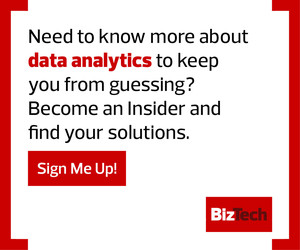What Is Data Cleaning, and How Can It Optimize Your Data?
Data cleaning, also known as data cleansing or data scrubbing, is a process where information is organized and optimized in ways that support an organization’s objectives, often with the goal of creating consistency in the data as presented.
This can take many forms. For example, data can naturally fall out of date over time, because contact information changes, because people change jobs or because people move. During the early days of the pandemic, for example, one common issue that mail-focused organizations faced was that many customers, clients and employees no longer worked in an office, meaning that mail sent to those offices, such as bills or magazines, were going unseen.
But other issues may arise as well. A person who fills out a form multiple times may create duplicative data, or users may make mistakes such as misspelling things. There can be differences in organization and measurement of data between countries.
“For example, one set of data could be measured in pounds, and the other one may be metric,” Metten says.
Another common need for data cleaning is to optimize data for a specific use case. For example, data may come with additional fields that are unrelated to or unnecessary for data analysis. Ultimately, the goal with data cleaning should be for the data to be focused, up to date and accurate.
There are significant business benefits to getting data cleaning right. The credit reporting firm Experian recently noted that 85 percent of businesses say poor-quality data can have a negative effect on organizational processes, while 89 percent say improving data-quality best practices improves overall business agility.
RELATED: Find out how managed detection and response can enhance your data protection efforts.
How to Begin the Process of Cleaning Data
Data cleaning can be done in numerous ways, including through both automated and fully manual processes.
The process may require going through a database and removing or changing records so they follow a consistent format. Traditionally this process has been manual, but some shortcuts can be taken, such as the use of regular expressions, a semi-programmatic technique for searching for specific patterns in a code or database. However, organizations that employ manual processes risk introducing human error into their data cleaning efforts.
Some vendors offer automated tools for data cleaning. For example, the Tableau Prep data-preparation tool can ease the process of cleaning and analyzing data across sources, whether the data is stored locally or in a cloud (or even multicloud) environment. The tool can identify data inconsistencies and gaps, which can help in the process of narrowing down a data set to what’s needed to tell a broader story — a process Metten compares to breaking down an iceberg.
“The bigger part of this exercise is not to build the visualization. In the end, the bigger part of this exercise is to actually arrive at the data and the understanding of the data and what you want to do with it,” he says. “And then, the last part of it is to actually build on top of what you have now claimed as a data source to build your visualizations.”
This is a complex process even for large enterprises. For example, Microsoft has an entire team dedicated to researching the issue, while Amazon Web Services released a technology a few years ago called AWS Glue Databrew, which aims to address the complexities of data preparation for data analysts and researchers.












